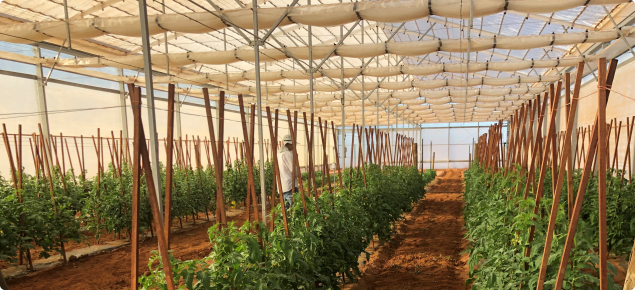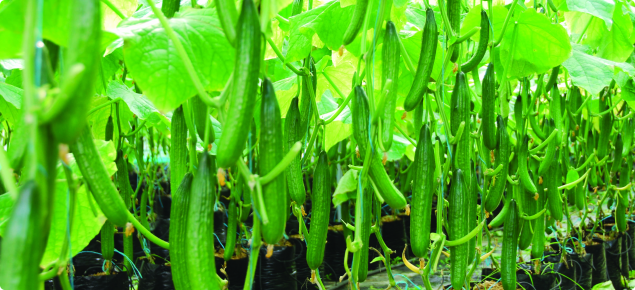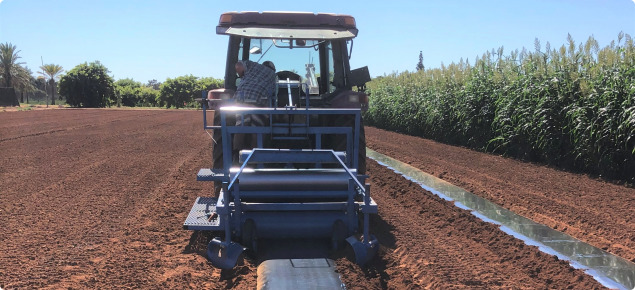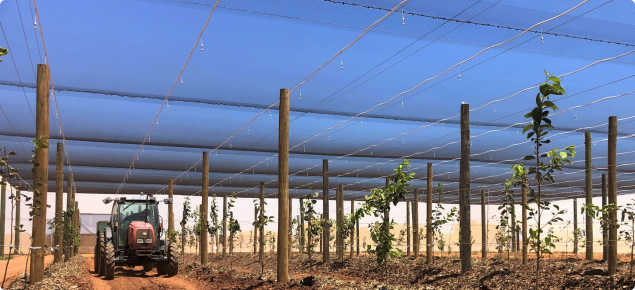Soils of the Carnarvon horticultural district have developed from alluvial sediments deposited on terraces that extend about one kilometre on either side of the Gascoyne River. Irrigated agriculture has been undertaken in the area since the early 1900s. Originally based on bananas and vegetables, production has now expanded to many different tropical and temperate crops and the irrigated horticultural area is one of the most productive in Western Australia. In 2020, horticultural production was valued at nearly $110m – with about two thirds of this coming from vegetable crops and a third from fruit crops.
The Carnarvon Research Station covers 66 hectares with 22 hectares of well drained, alkaline silty-loam sands cleared and incorporated in field operations. The station is fully irrigated with two reliable, high-quality water sources including water extracted from bores in Basin A in the Gascoyne River and supply from the local scheme. It has the capacity to establish and manage small to large research trials and demonstration sites.
Research
An investment of $1.4m in new infrastructure at the Carnarvon Research Station has seen construction of a protected cropping net house with a spectrum of shade factors on the roof and an automatic irrigation/misting system, installation of a retractable roof cooling house and a new chemical handling and storage facility. Research at the station includes examining how protected cropping systems can be used to optimise production of fruiting vegetables and cucurbits, which are the main crops grown in the district. Production benefits of planting perennial crops at high density including jackfruit, mangoes, persimmons and custard apples are currently being investigated.
The station manages avocado, date and dragon fruit germplasm in a maintenance phase ready for future research and development projects. Established mango trials are also in place and work is underway with Leucaena and Moringa. Cereal breeding lines and varieties are screened at the research station for rust diseases on behalf of plant breeding programs.
Facilities
- Capacity to establish and manage small to large research trials and demonstration sites
- Capacity to bulk up cereal seed and carry out disease screening for cereal breeding programs
- Best-practice biosecurity management in place
- Smart web-based technology being introduced to enable remote monitoring of weather and irrigation schedules
- Isolated environment enables specialised field evaluation of plant pathology and cereal phenotyping
- Two fully equipped laboratories, a chemical handling and storage facility, machinery workshop, nursery, processing/packaging shed and field plots
- Protected cropping net house with fully automated irrigation/misting systems
- Retractable roof greenhouse and fully automated fertigation, irrigation and misting systems
Collaborators
The Carnarvon Research Station is used by the Central Regional TAFE and the Carnarvon Community College to deliver Certificates in Agriculture, Horticulture, Rural Operations and Plant Production Systems, through DPIRD’s PRIMED project. Students have access to a suite of machinery and trials otherwise unavailable in a normal classroom setting. Plans are also in place to provide training opportunities to local plantation owners and staff wishing to strengthen their knowledge of best practice procedures, machinery operation, safety and technology opportunities.
History
In the early 1900s Afghan camel drivers and Chinese labourers grew vegetables for their own use along the few waterholes close to the Carnarvon town.
Following World War I, many pastoralists began to purchase lots along the northern and southern banks of the Gascoyne River to rest their stock during business or rest breaks away from their inland pastoral properties. This led to many shallow bores in the river being developed and vegetable and fruit growing increased. Following World War II, many European migrants travelled north from Perth to the Gascoyne specifically to grow commercial produce. Production grew quickly and was regularly sent to Perth by ship. Later, the introduction of refrigerated road transport saw the five-day boat journey cut to two days. Paddocks were originally flood-irrigated, before technology and farming practices changed to include drip irrigation, spray irrigation and other current systems.
Contact
For more information on the facilities and research and development opportunities available at Carnarvon Research Station please contact:
P: +61 1300 374 731 (1300 DPIRD1) or +61 (0)8 9956 3333
E: enquiries@dpird.wa.gov.au






